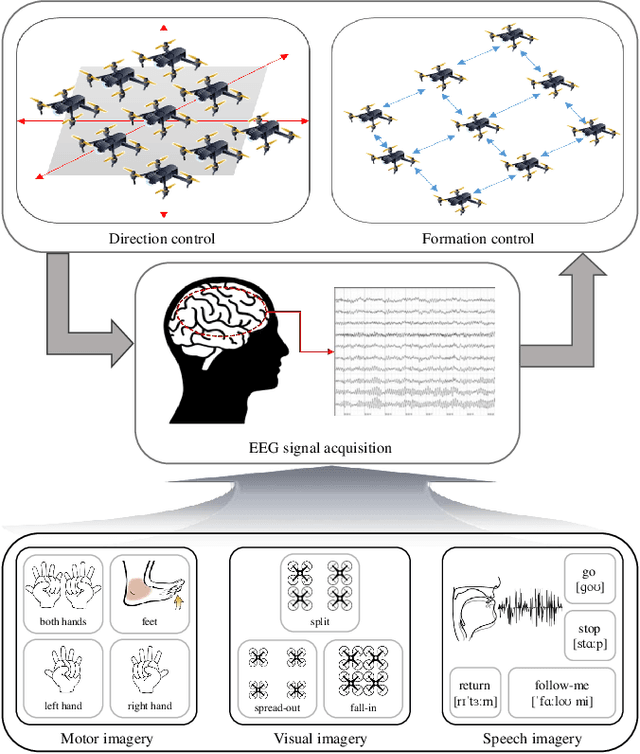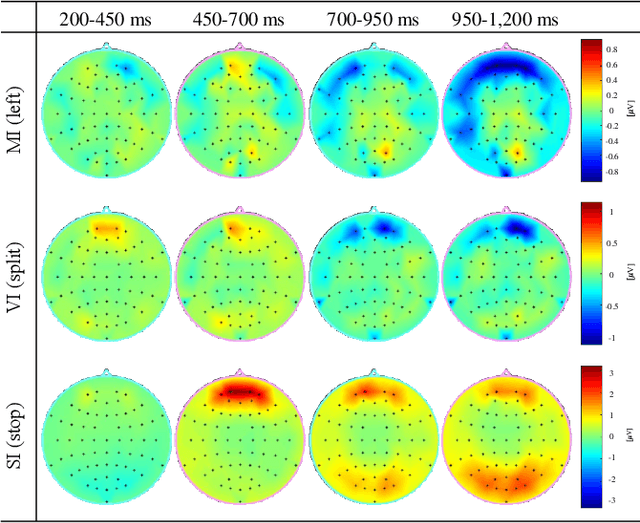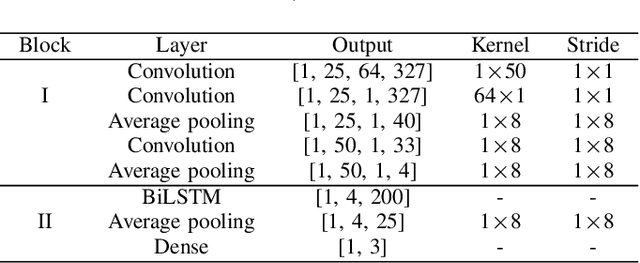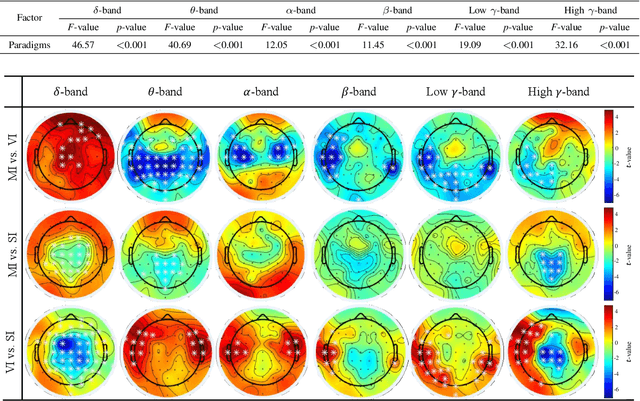Towards Natural Brain-Machine Interaction using Endogenous Potentials based on Deep Neural Networks
Paper and Code
Jun 25, 2021



Human-robot collaboration has the potential to maximize the efficiency of the operation of autonomous robots. Brain-machine interface (BMI) would be a desirable technology to collaborate with robots since the intention or state of users can be translated from the neural activities. However, the electroencephalogram (EEG), which is one of the most popularly used non-invasive BMI modalities, has low accuracy and a limited degree of freedom (DoF) due to a low signal-to-noise ratio. Thus, improving the performance of multi-class EEG classification is crucial to develop more flexible BMI-based human-robot collaboration. In this study, we investigated the possibility for inter-paradigm classification of multiple endogenous BMI paradigms, such as motor imagery (MI), visual imagery (VI), and speech imagery (SI), to enhance the limited DoF while maintaining robust accuracy. We conducted the statistical and neurophysiological analyses on MI, VI, and SI and classified three paradigms using the proposed temporal information-based neural network (TINN). We confirmed that statistically significant features could be extracted on different brain regions when classifying three endogenous paradigms. Moreover, our proposed TINN showed the highest accuracy of 0.93 compared to the previous methods for classifying three different types of mental imagery tasks (MI, VI, and SI).
 Add to Chrome
Add to Chrome Add to Firefox
Add to Firefox Add to Edge
Add to Edge